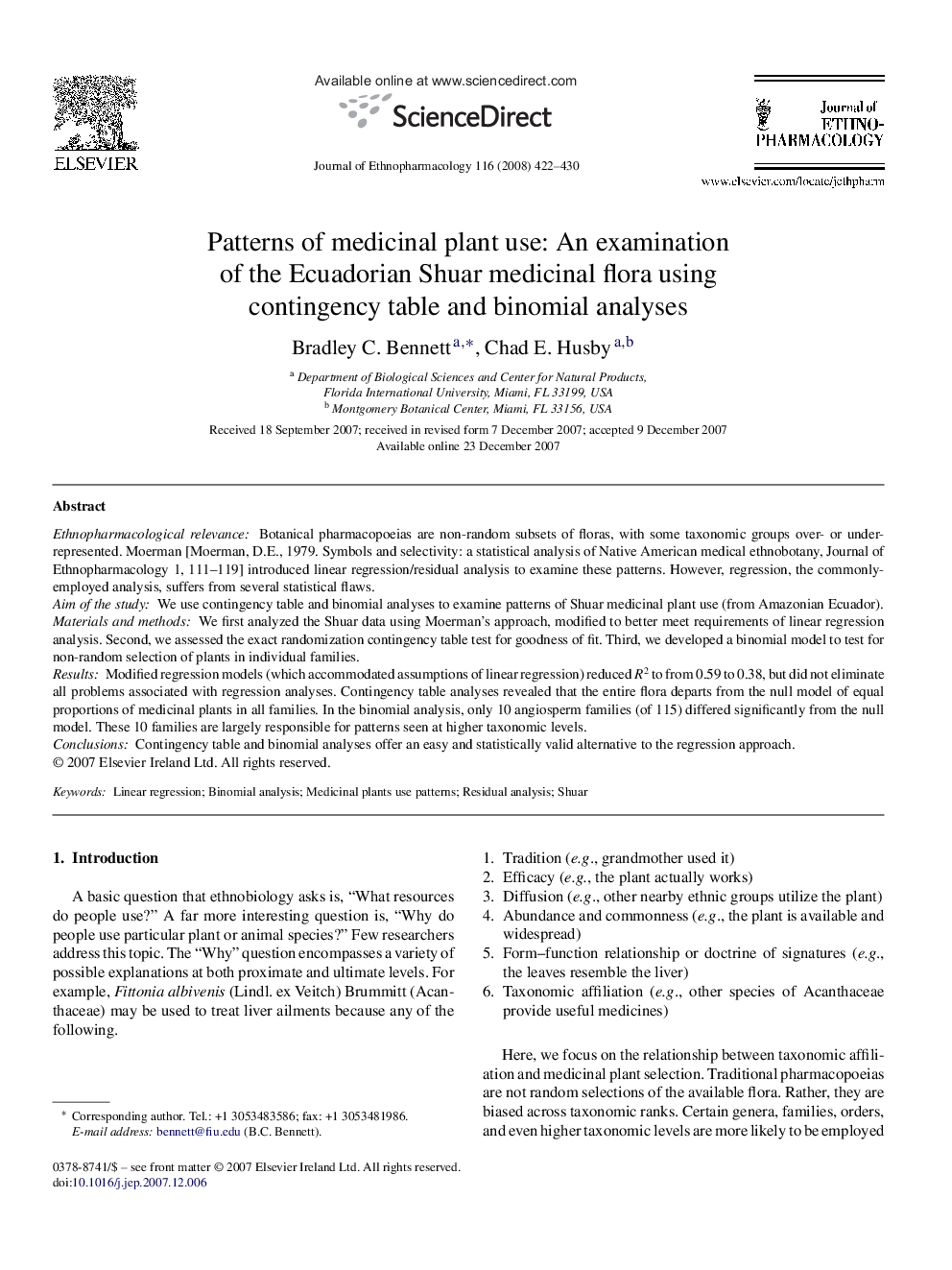| Article ID | Journal | Published Year | Pages | File Type |
|---|---|---|---|---|
| 2547226 | Journal of Ethnopharmacology | 2008 | 9 Pages |
Ethnopharmacological relevanceBotanical pharmacopoeias are non-random subsets of floras, with some taxonomic groups over- or under-represented. Moerman [Moerman, D.E., 1979. Symbols and selectivity: a statistical analysis of Native American medical ethnobotany, Journal of Ethnopharmacology 1, 111–119] introduced linear regression/residual analysis to examine these patterns. However, regression, the commonly-employed analysis, suffers from several statistical flaws.Aim of the studyWe use contingency table and binomial analyses to examine patterns of Shuar medicinal plant use (from Amazonian Ecuador).Materials and methodsWe first analyzed the Shuar data using Moerman's approach, modified to better meet requirements of linear regression analysis. Second, we assessed the exact randomization contingency table test for goodness of fit. Third, we developed a binomial model to test for non-random selection of plants in individual families.ResultsModified regression models (which accommodated assumptions of linear regression) reduced R2 to from 0.59 to 0.38, but did not eliminate all problems associated with regression analyses. Contingency table analyses revealed that the entire flora departs from the null model of equal proportions of medicinal plants in all families. In the binomial analysis, only 10 angiosperm families (of 115) differed significantly from the null model. These 10 families are largely responsible for patterns seen at higher taxonomic levels.ConclusionsContingency table and binomial analyses offer an easy and statistically valid alternative to the regression approach.
